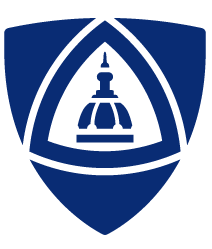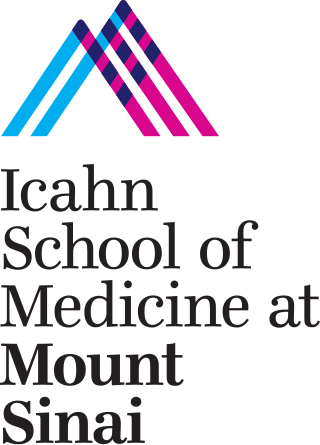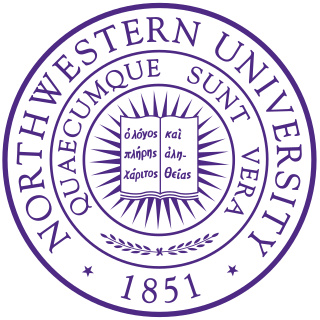
The Baylor College of Medicine (BCM) is a private medical school in Houston, Texas, United States. Originally as the Baylor University College of Medicine from 1903 to 1969, the college became independent with the current name and has been separate from Baylor University since 1969. The college consists of four schools: the School of Medicine, the Graduate School of Biomedical Sciences, the School of Health Professions, and the National School of Tropical Medicine.

The Tulane University School of Medicine is the medical school of Tulane University and is located in the Medical District of the New Orleans Central Business District in New Orleans, Louisiana, United States.

The National Medical Association (NMA) is the largest and oldest organization representing African American physicians and their patients in the United States. As a 501(c)(3) national professional and scientific organization, the NMA represents the interests of over 30,000 African American physicians and their patients, with nearly 112 affiliated societies throughout the nation and U.S. territories. Through its membership, professional growth, community health education, advocacy, research, and collaborations with public and private organizations, the organization is dedicated to enhancing the quality of health among minorities and underprivileged people. Throughout its history, the NMA has primarily focused on health issues related to African Americans and medically underserved populations. However, its principles, goals, initiatives, and philosophy encompass all ethnic groups
Conceived in no spirit of racial exclusiveness, fostering no ethnic antagonism, but born of the exigencies of the American environment, the National Medical Association has for its object the banding together for mutual cooperation and helpfulness, the men and women of African descent who are legally and honorably engaged in the practice of the cognate professions of medicine, surgery, pharmacy and dentistry.
— C.V. Roman, M.D. NMA Founding Member and First Editor of the Journal of the National Medical Association (NMA) 1908

The Johns Hopkins University School of Medicine (JHUSOM) is the medical school of Johns Hopkins University, a private research university in Baltimore, Maryland. Founded in 1893, the School of Medicine shares a campus with Johns Hopkins Hospital and Johns Hopkins Children's Center, established in 1889.
Albany Medical College (AMC) is a private medical school in Albany, New York. It was founded in 1839 by Alden March and James H. Armsby and is one of the oldest medical schools in the nation. The college is part of the Albany Medical Center, which includes the Albany Medical Center Hospital.

The Icahn School of Medicine at Mount Sinai, formerly the Mount Sinai School of Medicine, is a private medical school in New York City, New York, United States. The school is the academic teaching arm of the Mount Sinai Health System, which manages eight hospital campuses in the New York metropolitan area, including Mount Sinai Hospital and the New York Eye and Ear Infirmary.

William Henry Welch was an American physician, pathologist, bacteriologist, and medical-school administrator. He was one of the "Big Four" founding professors at the Johns Hopkins Hospital. He was the first dean of the Johns Hopkins School of Medicine and was also the founder of the Johns Hopkins School of Hygiene and Public Health, the first school of public health in the country. Welch was more known for his cogent summations of current scientific work, than his own scientific research. The Johns Hopkins medical school library is also named after Welch. In his lifetime, he was called the "Dean of American Medicine" and received various awards and honors throughout his lifetime and posthumously.

The Feinberg School of Medicine is the medical school of Northwestern University and is located in the Streeterville neighborhood of Chicago, Illinois. Founded in 1859, Feinberg offers a full-time Doctor of Medicine degree program, multiple dual degree programs, graduate medical education, and continuing medical education.

Boston University Chobanian & Avedisian School of Medicine (CAMED), formerly known as Boston University School of Medicine, is the medical school of Boston University, a private research university in Boston. It was founded in 1848. The medical school was the first institution in the world to formally educate female physicians. Originally known as the New England Female Medical College, it was subsequently renamed Boston University School of Medicine in 1873, then Chobanian & Avedisian School of Medicine in 2022. In 1864, it became the first medical school in the United States to award an M.D. degree to an African-American woman.

Paul Oscar Blocq (1860–1896) was a French pathologist who is remembered for his neuropathological work done with Jean-Martin Charcot (1825-1893) and Gheorghe Marinescu (1863-1938) at the Salpêtrière in Paris.
Charles Alderson Janeway, Jr. was an American immunologist who helped create the modern field of innate immunity. A member of the National Academy of Sciences, he held a faculty position at Yale University's Medical School and was an Howard Hughes Medical Institute Investigator.

Charles Badham FRS was a physician from London, England who gave bronchitis its name.
Jean-Pierre or Pierre Blaud , often seen as P. Blaud of/de Beaucaire was a French doctor of medicine who in 1832 introduced and started the use of Blaud's pills or iron pills as a medication for patients with anemia. Blaud of Beaucaire was one of the leading physicians at the Hospital of Beaucaire in France.
The Michigan State Medical Society (MSMS) is a professional association representing more than 15,000 physicians in Michigan. Incorporated on June 5, 1866, MSMS is a non-profit, membership organization of physicians, graduates completing residency programs, and medical school students. MSMS is the state affiliate of the American Medical Association.

Victor Robinson was a physician and medical journalist.

William G. Boericke was an Austrian-born American physician and ardent, influential exponent of homeopathy. He is known in the field today as the compiler and editor of the Pocket Manual of Homeopathic Materia Medica. The ninth edition has endured as his most re-published version partly because of its then final inclusion of a mini-repertory by his brother, Oscar Eugene Boericke, MD, also a homeopathic physician.

The SUNY Downstate Health Sciences University is a public medical school in Brooklyn, New York City. The university includes the College of Medicine, College of Nursing, School of Health Professions, School of Graduate Studies and School of Public Health.
Penny Wise Budoff was an American physician. She was a family practitioner, and a clinical associate professor of family medicine at the State University of New York at Stony Brook. She is known for her research, which established that menstrual cramping is a physical phenomenon rather than a psychological one. She wrote two books on women's health.

A History of Medicine is a book by Scottish surgeon Douglas Guthrie that was published in 1945 by Thomas Nelson and Sons. It came to wide attention after it was reviewed by the playwright George Bernard Shaw and marked the beginning for Guthrie of a new career in teaching the history of medicine.














